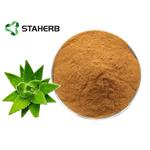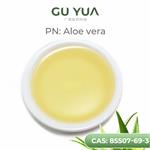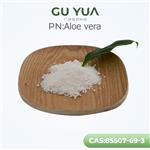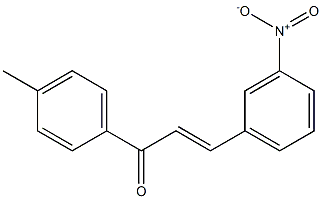- Aloe vera
-

- $0.00 / 1kg
-
2024-04-23
- CAS:85507-69-3
- Min. Order: 1kg
- Purity: 20%;50%;98% UV
- Supply Ability: 1000
- Aloe vera
-

- $10.00 / 1kg
-
2024-03-08
- CAS:85507-69-3
- Min. Order: 1kg
- Purity: 99%
- Supply Ability: 1000kg
- Aloe vera
-

- $10.00 / 1kg
-
2024-03-08
- CAS:85507-69-3
- Min. Order: 1kg
- Purity: 99%
- Supply Ability: 1000kg
Related articles - About the safety of Aloe Vera
- Aloe vera’s use can be traced back 6,000 years to early Egypt, where the plant was depicted on stone carvings. Known as the “p....
- Oct 15,2019
|
| Product Name: | Aloe vera | | Synonyms: | ALOE VERA;Aloe vera, ext.;Aloeextractacc.;Aloeveradryextract;ALOEVERA,200:1,POWDER;ALOEVERA,FREEZEDRIDEPOWDER;ALOEVERA,LUMP,USP;Aloes, extract | | CAS: | 85507-69-3 | | MF: | C16H13NO3 | | MW: | 267.27932 | | EINECS: | 287-390-8 | | Product Categories: | cosmetic;Disinfectants | | Mol File: | 85507-69-3.mol |  |
| | Aloe vera Chemical Properties |
| | Aloe vera Usage And Synthesis |
| Pharmaceutical Applications | A. vera is one of the most widely explored folk medicines, and its use for skin disorders dates back to thousands of years. The Aloe plant-derived medicinal and cosmetic products are among the biggest natural product-based industries all over the world. This succulent herb belongs to the family of Alliaceae. Many a times also referred as Aloe barbadensis Miller, it is native to Southern and Eastern Africa. In India and China, since ancient times Aloe has been an important medicine for its cathartic, stomachic, and emmenagogue properties (Grindley and Reynolds 1986). The therapeutic and medicinal uses of A. vera have been reviewed in detail by Sahu et al. (2013), which describe the anti-inflammatory, antioxidant, antimicrobial, antifungal, anti-helminthic, antiseptic, emollient, purgative, laxative, and aphrodisiac properties of the plant’s leaves. Aloe vera gel is known for its healing properties for skin injury and as a remedy for sunburns, burns and cuts, acne, injury to epithelial cells, and even skin cancer (Shelton 1991). Its antiviral, antidiabetic, and stress-reducing effects are also well documented (Noor et al. 2008; Sahu et al. 2013). Among the various active components of Aloe are anthraquinones; chromones; monosaccharides; polysaccharides; vitamins B1, B2, B6, and C; niacinamide; choline and enzymes like acid and alkaline phosphatase; amylase; lactate dehydrogenase; lipase; and many inorganic ingredients, but most important among them is the long chain of acetylated mannose (Hayes 1999; Djeraba and Quere 2000).
The anticancer activity of A. vera gel is also being explored. The glycoproteins present in the gel have antiulcer and antitumor activities (Yagi et al. 2003). Aloe vera gel was tested for its efficacy in the management of oral submucous fibrosis (OSMF), a potentially malignant disorder frequently associated with gutkha and betel nut chewing. The topical application of gel for 3 months significantly improved the clinical symptoms in all studied subjects with reduced burning and improved mouth opening or cheek flexibility (Sudarshan et al. 2012). The gel has also shown promising results in reducing oral mucositis, which is a frequent complication in radiation therapy in head and neck cancer patients (Ahmadi 2012). Because of its antifungal properties, topical application of A. vera gel is also effective in oral candidiasis, another risk factor in such patients. In another study, the gel polysaccharides were tested on oral ulcer animal models for its antioxidant activity. Results, as described by investigators, demonstrated enhanced innate immune response and suppressed oxidative injury as compared to control group animals (Yu et al. 2009). The gel polysaccharide has inhibitory effect on ornithine decarboxylase activity in Balb/3T3 mice and on tyrosine kinase activity in human leukemic cells (Kim et al. 1999).
| | Uses | aloe vera is an emollient and film-forming gum resin with hydrating, softening, healing, anti-microbial, and anti-inflammatory proper ties. It is most widely recognized for its moisturizing capacity. Aloe vera supplies moisture directly to the skin tissue. other properties include moisture regulation and an apparent ability to absorb uV light. It has a slightly relaxing effect on the skin, making it valuable for sensitive, sunburned, and sun-exposed skins. Aloe vera was popular in traditional medicine to heal burns. It is often used in gels to refresh and calm irritated skin, hence its popularity in sun preparations for cooling and soothing. In addition, it is found to be effective in emulsions formulated for regulating dry skin. There is some indication that aloe vera has a synergistic effect when used in conjunction with other anti-inflammatory substances. Concentrations over 50 percent have been shown to increase the blood supply to the area of application. Although aloe vera’s important constituents are minerals, polysaccharides, amino acids, and carbohydrates, it is about 99.5 percent water. Its benefit in a skin care product depends on the appropriate concentration, as different concentrations result in different benefits and end products. An almost odorless and nearly colorless extract, it is derived from the sap of the aloe leaf. It is used in cosmetics in a gel form (also referred to as an extract) or in a diluted version referred to as aloe vera juice. | | Definition | Extractives and their physically modified derivatives such as tinctures, concretes, absolutes, essential oils, oleoresins, terpenes, terpene-free fractions, distillates, residues, etc., obtained from Aloe vera, Liliaceae. | | Anticancer Research | A. vera is an herbal remedy promoted as treating a variety of illness (Lust 2014).These two herbal remedies act together as a means to cleanse the colon and eliminatetoxins which could accumulate in the digestive tract causing disease; they alsofunction as an anti-inflammatory agent (Kapoor 2000). |
| | Aloe vera Preparation Products And Raw materials |
|